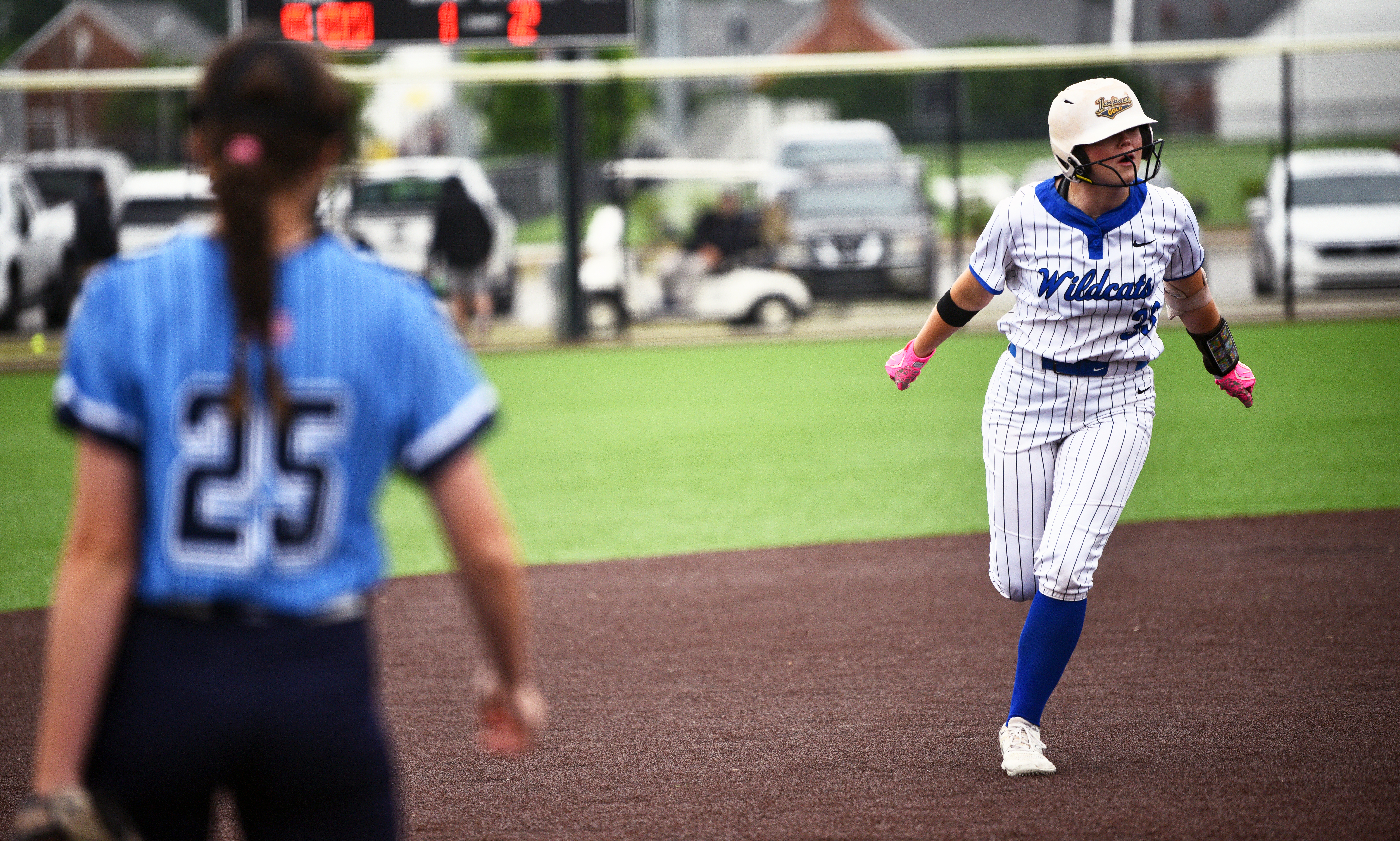Oklahoma is the Big 12 favorite, but will the College Football Playoff favor the Big 12?
Published 3:34 pm Tuesday, August 22, 2017
The Big 12 finally has regained its elusive 13th data point, better known to those not on the College Football Playoff selection committee as a conference championship game. Its bigger problem is making sure the top half of the league doesn’t cannibalize itself and leave the conference without a playoff participant for the third time in four years.
As much as the Big 12 has studied its snubs in the playoff’s brief history, it need only look at the loss column to explain last season. Everyone, including league champ Oklahoma, had two losses. The Sooners didn’t get in at 10-2, and they wouldn’t have at 11-2, either.
Email newsletter signup
The Big 12 – back when its moniker was numerically correct – had its share of headaches with its title game in the BCS era. There’s no guarantee an early December rematch doesn’t ultimately trip up a regular season favorite.
Heading into the year, that favorite is Oklahoma under new Coach Lincoln Riley. He might be inheriting the best situation of any first-time coach since Miami’s Larry Coker in 2001 (though David Shaw was in a great spot upon taking over at Stanford in 2011, too). That turned out okay for the Hurricanes.
The threats to the Sooners are obvious enough. Oklahoma State is potent. Football sorcerer Bill Snyder should have another good team at Kansas State. Texas Christian and West Virginia are dangerous. Plenty of eyes will be on Texas and its new coach, Tom Herman.
Most Popular
And then there’s Riley himself, who earned the keys to the head coach’s suite at a perennial contender to cap a meteoric rise. Only time will tell how well he’ll fare as Bob Stoops’s replacement, but he’s set up to thrive this fall.
1. Oklahoma (No. 5 nationally, 11-2 in 2016): Heisman candidate Baker Mayfield? He’s back. All five starting offensive linemen? Also returning. That’s an incredible place to start for a team that ranked second in the country in total yardage and third in scoring last season.
There wasn’t just a gap between the Sooners and the rest of the Big 12 in the second half of last season, there was a canyon. When they were challenged in league play, they just kept on scoring until the clock hit zeros. Expect that to happen again in a league with its share of beleaguered defenses. The real test comes Sept. 9 at Ohio State, the Sooners’ biggest bellwether since losing to the Buckeyes early last year at home.
2. Oklahoma State (No. 10, 10-3): He’s a man, he’s 50 and he’s averaged 9.3 victories per season since uncorking one of the great coaching rants of the 21st century. No matter how generous the money spigot, it is hard to post five 10-win seasons in seven seasons at Oklahoma State while sharing the neighborhood with Oklahoma and Texas. That’s quite the feat for Mike Gundy.
There’s a good chance the Cowboys get there again. Quarterback Mason Rudolph should pass Brandon Weeden as the program’s career passing leader no later than the third week of the season, and James Washington, who averaged 19.4 yards per catch last year, is one of the nation’s best deep threats. Even with a little regression on defense after six starters depart, Oklahoma State again poses the biggest obstacle to Oklahoma in the Big 12.
3. Kansas State (No. 19, 9-4): Like any other year, underestimate the Wildcats at your own peril. Sometimes, things will go sideways and K-State will end up at .500, as it did in 2015. More often, the Wildcats will play as much defense as anyone in the Big 12 and then build a respectable enough offense to complement it.
QB Jesse Ertz rushed for more than 1,000 yards last year, and while it would be nice for K-State to develop its passing game a bit more, it’s not always necessary. The line and secondary will be strengths on defense, with plenty of holes in the linebacking corps. Solve that issue and Snyder will be on the prowl for a league title. Getting Oklahoma at home certainly helps.
4. Texas Christian (No. 23, 6-7): Not to be mean-spirited, but the Horned Frogs lost their career leaders in passing and receiving after 2015, and they had grown accustomed to steamrolling foes with a relentless offense in 2014 and 2015. Should there have been any expectation for sustaining that sort of play?
Much of last year’s offense returns, and that could be a good thing – if QB Kenny Hill can cut down on his 13 interceptions, if the receiving corps can cut down on its drops, if TCU can reduce its number of sacks allowed from last year’s total of 31. If, if, if. TCU was once rightfully known for its defense, but its hopes of bouncing back from a 6-7 mark ride depend more on improving its offense.
5. West Virginia (No. 28, 10-3): The shortlist of consistent defensive teams in the Big 12 must include the Mountaineers, who overcame a variety of personnel losses to rank second in the league in scoring defense and third in yards allowed. Now, safety Dravon Askew-Henry is back from a torn anterior cruciate ligament, a major lift for a defense that again saw considerable losses.
A major question here is how effective QB Will Grier can be after missing the last season and a half. The former Florida starter was suspended in the middle of 2015 for testing positive for a banned substance, but he could be a difference-maker for an offense that will also benefit from tailback Justin Crawford. The senior averaged 7.3 yards per carry last year and should carve out a larger role in 2017.
6. Texas (No. 31, 5-7): Charlie Strong got a nice buyout from the Longhorns. He probably deserves a thank-you note or a holiday card from Tom Herman, who has a far greater opportunity to succeed immediately than Strong did. Texas will be better, will go to a bowl game and might even have a surprise victory or two in it this year.
But let’s not get away from the big picture. Since losing the national title game to cap the 2009 season, Texas is 46-42 over seven years. Texas! Between financial resources and geographic advantages, there might not be a program in the country with less of an excuse for such mediocrity. Consider this a reminder that no program simply rolls along unimpeded if there is enough dysfunction around it (whether in the locker room or in athletic administration).
7. Baylor (No. 55, 7-6): Strictly from a football perspective – and that’s not easy to do given the Bears’ sordid recent history – this year marks a chance for things to get back to normal (or as close as possible). There’s a new coach in Matt Rhule, the old staff has cleared out and it’s as clear as ever the severity of the program’s missteps in everything outside the lines were under Art Briles.
So, with that premise in mind, what constitutes normal? Pre-Briles Baylor was a Big 12 doormat. Briles-era Baylor played in BCS games and produced a Heisman Trophy winner. There’s not much between. All new coaches try to instill an identity, but none will be as intriguing to watch in the coming years as Rhule. His first team in Waco should hover around .500, but where things go from here is anyone’s guess.
8. Texas Tech (No. 70, 5-7): The Red Raiders rolled up the most yards per game of anyone in FBS but also ranked last in total defense. This is the dichotomy of Texas Tech under Kliff Kingsbury – plenty entertaining on offense, perpetually producing matador defenses – and there really isn’t much reason to think that will change this fall.
There was an eventual first-round NFL draft pick playing quarterback last year (Patrick Mahomes). He’s gone now. That’s not to say Iowa transfer Nic Shimonek won’t put up strong numbers, but Mahomes’s exit still places a somewhat greater burden on the defense to figure things out. It doesn’t have to become great, just good enough to ensure that Texas Tech will win when it scores 50 points. The Red Raiders have lost four such games in the past two years.
9. Iowa State (No. 76, 3-9): Usually, when there’s a hybrid quarterback-linebacker on the roster, he plays for a high school team or a greatly beleaguered college program. That’s not really the case for the Cyclones’ Joel Lanning, even if Iowa State hasn’t reached the postseason since 2012.
The Cyclones led Baylor and Oklahoma State in 2016 before fourth-quarter meltdowns and were within a possession of Oklahoma in the final period.
This wasn’t a good team last year, but it wasn’t a train wreck, either. Matt Campbell’s rebuilding project showed some promise, and guys such as Lanning and star wideout Allen Lazard have a chance to go out with a bowl bid if things break right.
10. Kansas (No. 94, 2-10): Slowly, improvement is coming in Lawrence. There were plenty of games last season when the Jayhawks played respectably against explosive Big 12 offenses before their own propensity to stack up three-and-outs (or turnovers) eventually wore out the defense.
There’s experience back on offense, and there was credible improvement in pass protection last year.
Steven Sims Jr. leads a skill position group that is more talented than when David Beaty took over the program two years ago, and the Jayhawks had the benefit of an overtime defeat of Texas last November to buoy their spirits. Kansas won’t be good, but it is getting better. A team that hasn’t won a game away from home since 2009 has to crawl before it can walk.





